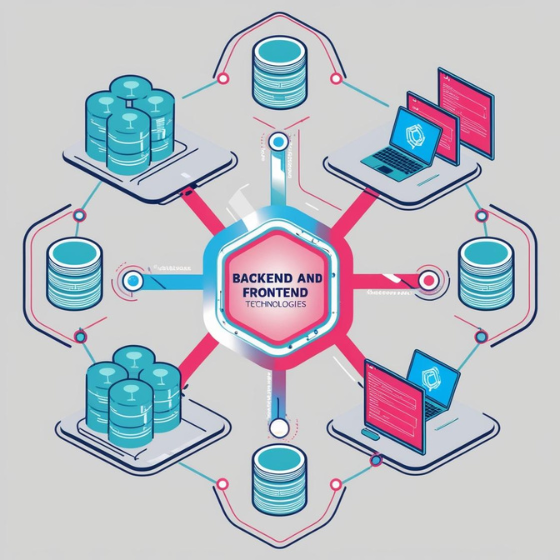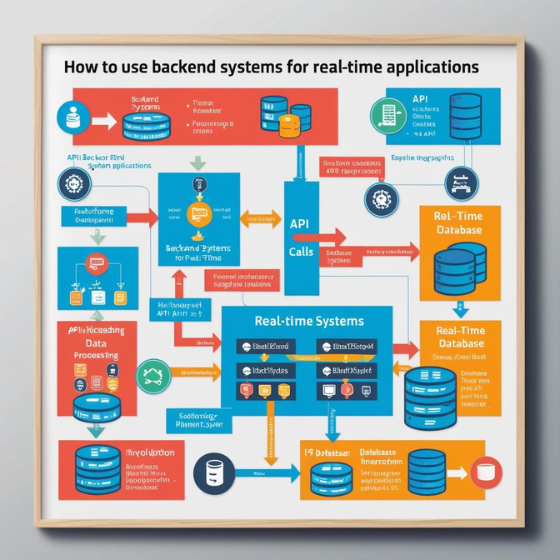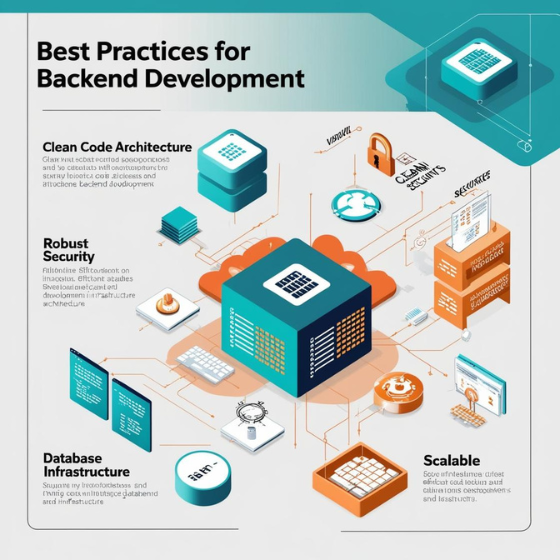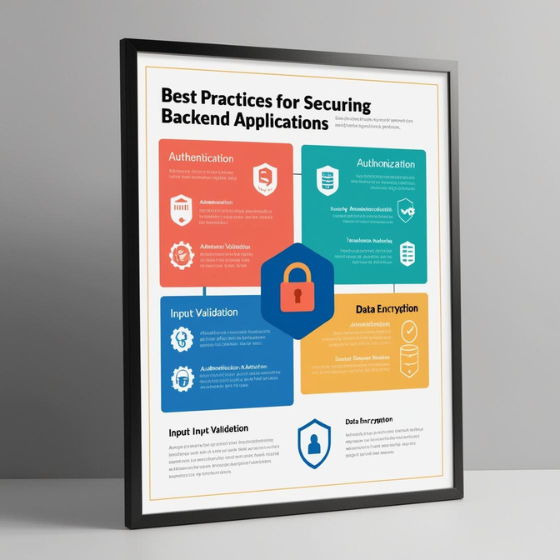How to Integrate Backend with Frontend Technologies: A Comprehensive Guide
Introduction
In the world of web development, a smooth and seamless connection between the frontend and backend is crucial for a high-performing, dynamic web application. According to a survey, 60% of developers struggle with the integration of backend with frontend technologies. This challenge highlights the importance of mastering the art of how to integrate backend with frontend technologies effectively.
This blog will delve into the methods, best practices, and tools used to bridge the gap between frontend and backend systems, ensuring a smooth, secure, and scalable integration. Whether you’re working on a single-page application (SPA) or a complex multi-page system, understanding how to integrate backend with frontend technologies is essential for building responsive applications. You’ll also gain insights into how this integration impacts the user experience, performance, and scalability of your app.
1. Understanding the Basics of Frontend and Backend
Before diving into the integration techniques, it’s important to define the roles of frontend and backend technologies.
- Frontend: The frontend is everything that the user interacts with directly in a web application. It includes the visual elements (such as the user interface), navigation, and functionality users experience. Technologies like HTML, CSS, JavaScript, and frameworks like React, Angular, and Vue are commonly used for frontend development.
- Backend: The backend is the server-side part of the application responsible for managing and storing data, processing requests, and performing business logic. It typically involves technologies like Node.js, Python, Ruby on Rails, and databases such as MySQL, MongoDB, and PostgreSQL.
In essence, how to integrate backend with frontend technologies is about ensuring that the frontend can communicate effectively with the backend to retrieve and display data in real-time.
2. Choosing the Right Communication Protocols
When integrating backend with frontend technologies, you must ensure smooth communication between the two. This communication often occurs through APIs or WebSockets, allowing the frontend to request data or perform operations via the backend.
API Integration: REST vs GraphQL
- REST (Representational State Transfer): REST is one of the most popular methods for integrating backend with frontend technologies. In a RESTful API, the backend provides endpoints that the frontend can call to retrieve or update data. Each API endpoint typically corresponds to an action, such as fetching user information or posting new data.
- GraphQL: GraphQL is a modern alternative to REST that allows the frontend to request exactly the data it needs from the backend, resulting in more efficient data fetching. It’s more flexible compared to REST, as it lets the frontend control the structure of the responses.
By understanding the differences between REST and GraphQL, you can choose the right protocol based on your project requirements. For instance, if your application needs to fetch data from multiple resources with minimal overhead, GraphQL might be a better choice.
WebSocket Communication
For real-time communication between the frontend and backend, WebSockets are an ideal solution. WebSockets allow the frontend to establish a persistent connection with the backend, enabling real-time data transfer, ideal for chat applications, live updates, and notifications.
3. Data Flow: Connecting Frontend to Backend
To integrate backend with frontend technologies, it’s essential to design an efficient data flow. The data flow is how information moves from the backend to the frontend and vice versa.
RESTful API Data Flow
- Frontend Requests Data: The frontend sends an HTTP request (e.g., GET, POST, PUT, DELETE) to the backend via an API endpoint.
- Backend Processes Request: The backend processes the request, performs the necessary logic, interacts with the database if needed, and prepares the response.
- Frontend Receives Data: The backend sends a response (typically in JSON format) to the frontend, which is then used to update the user interface dynamically.
Example: Fetching User Data
For instance, if you are building a user profile page, the frontend might make a GET request to the /user/profile endpoint. The backend would fetch the user’s data from the database and send it to the frontend, which would render the data on the user profile page.
By following these practices, you ensure smooth communication between frontend and backend.
4. Authentication and Authorization: Securing the Integration
One of the critical aspects of how to integrate backend with frontend technologies is implementing secure authentication and authorization processes. Without proper security measures, unauthorized users may gain access to sensitive data.
Common Authentication Techniques:
- JWT (JSON Web Token): JWT is a popular method for secure authentication. The frontend sends the credentials (username and password) to the backend, which validates the credentials and generates a JWT token. The frontend then uses this token to make authorized requests to the backend.
- OAuth 2.0: For third-party integrations, OAuth 2.0 is often used. It allows users to authenticate using their Google, Facebook, or other third-party accounts without sharing passwords directly with the application.
Ensuring Data Privacy
When integrating backend with frontend technologies, it’s important to implement proper encryption techniques, such as HTTPS for all requests, to ensure data privacy and prevent man-in-the-middle attacks. Additionally, be sure to protect sensitive data like passwords using hashing algorithms (e.g., bcrypt).
To enhance the security of your application, visit Sodio’s security services for expert advice on authentication and data protection.
5. Optimizing the Performance of the Integration
Performance is a key consideration when integrating backend with frontend technologies. A slow or inefficient integration can lead to delays, affecting the user experience and causing frustration.
Caching
Implementing caching mechanisms helps reduce the load on both the frontend and backend. For instance:
- Frontend Caching: Store data in the browser cache (localStorage or sessionStorage) to avoid repeated requests to the backend.
- Backend Caching: Use tools like Redis or Memcached to cache frequently requested data on the server-side, reducing database queries.
Asynchronous Operations
Asynchronous operations allow the frontend to continue interacting with the user interface while the backend is processing requests. This can significantly improve user experience by preventing the UI from freezing during lengthy tasks like data processing or file uploads.
Consider integrating asynchronous communication between frontend and backend using AJAX, Fetch API, or libraries like Axios.
Conclusion
Integrating backend with frontend technologies is a critical component of building modern, dynamic web applications. By understanding and implementing the right tools and techniques, such as choosing the appropriate API, managing data flow efficiently, securing user data, and optimizing performance, you can ensure a seamless connection between your frontend and backend.
At Sodio, we specialize in helping businesses with backend and frontend integration. If you’re looking for expert assistance to ensure a seamless and secure integration, explore our custom web development services. Get in touch with us today to take your web application to the next level!







